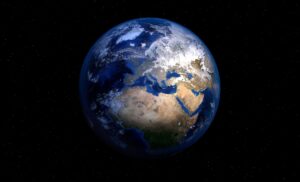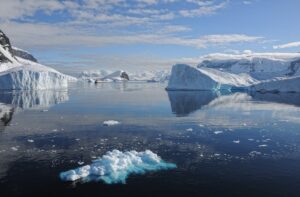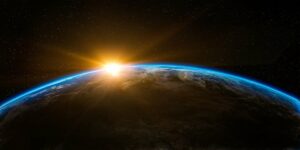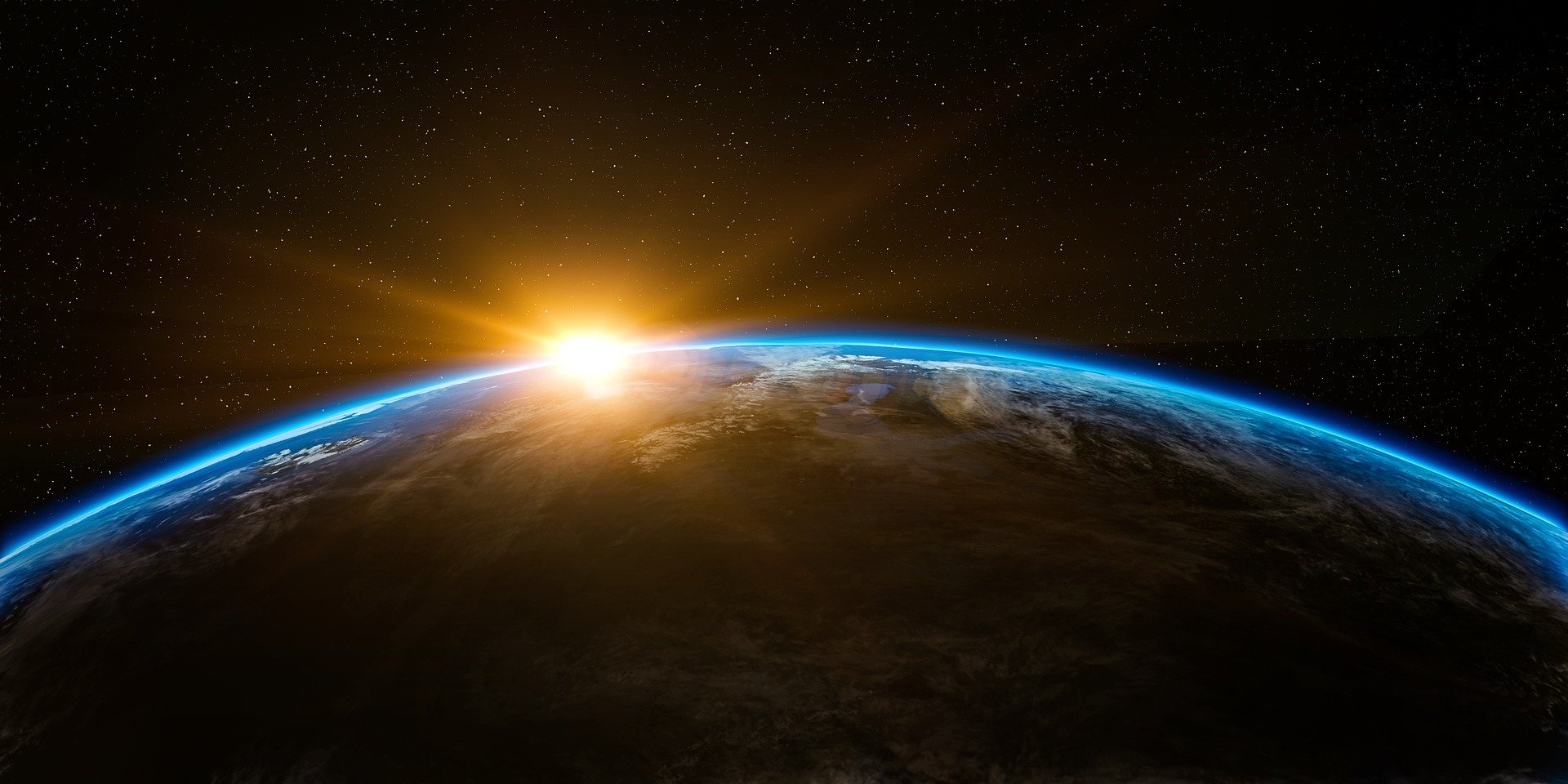How Will a Plastics Treaty Make a Difference in Solving the Plastics Crisis?
Christina Dixon, Ocean Campaign Leader at the Environmental Investigation Agency, shared with us the background of the Plastics Treaty and explained how it will make a difference in solving the plastics crisis.
Q: What is the story of the Plastics Treaty?
There has been a growing interest in plastic pollution in the marine environment since the nineties. Later in 2017, UNEP published a study entitled “Making Peace with Nature” with clear conclusions: the planet is facing clear existential threats, including pollution, biodiversity loss, and climate change, with plastic a common thread between them all. Also, plastic compromises human health and poses a direct threat to planetary boundaries.
 While there are dedicated global agreements for two existential threats – climate change and biodiversity loss – plastic pollution has no policy instrument, and plastics global governance is fragmented and insufficient.
While there are dedicated global agreements for two existential threats – climate change and biodiversity loss – plastic pollution has no policy instrument, and plastics global governance is fragmented and insufficient.
Also, in other ongoing conversations, such as the climate Conference of the Parties (CoP), there has been scant mention of plastics’ contribution to Greenhouse Gas Emissions (GHG), despite evidence showing the connection between plastic production and use, and GHG emissions.
In recent years the need for a Convention on Plastic Pollution has become urgent, and members of the United Nations Environment Assembly (UNEA) have led the initiative to launch negotiations, which kicked off in February 2022 and will end by December 2024. The first negotiation round will take place in Uruguay on November 28, 2022.
Q: What are the environmental impacts of plastic?
Plastic is part of the triple environmental crisis: biodiversity loss, climate change, and pollution (1):
- Biodiversity:
Every year, approximately 12 million tons of plastic enter the Ocean. Plastics physically harm marine species due to the ingestion and entanglement of plastic debris. As far as we know, 914 marine species are directly impacted, and even terrestrial mammals are concerned: 1% mortality rate of dromedary camels in the United Arab Emirates is attributed to plastic, and 25% of polar bears have eaten plastic.

Another critical point to remember is that plastics are made from fossil fuels, and the operating activities during their extraction phase affect biodiversity via air, soil, water, and food sources contamination and habitat destruction.
- Climate change: people should know that plastics are 80% carbon and more than 99% fossil fuels. If the whole plastics lifecycle were a country, it would be the world’s fifth largest emitter of greenhouse gases.
- Pollution: In the case of plastic, the pollution is physical and chemical. Physical pollution is very well documented and is the part of the iceberg that we can see, but then there is chemical pollution, which is the hidden part of the iceberg. For example, plastics are made of small chemical building blocks, to which plastic producers often add toxic additives.
Q: If these additives are toxic, do you mean that plastics impact human health?
There are several ways in which plastics can impact human health.
First, incineration emits toxins. For example, burning PVC emits dioxins which are very toxic to human bodies. (1)
Then, people are exposed to toxic substances in plastics (including in recycled ones) when they use them, e.g., children’s toys, hair accessories, food containers, kitchen accessories, etc.
According to IPEN, a recent systematic review found that 2,486 chemicals out of a total of 10,000 are of potential concern regarding their toxic properties; more than half of them are NOT controlled or regulated.
Those toxins are responsible for multiple health effects: cancer, reproductive diseases, and endocrine (hormone) disruption, which leads to obesity, growth problems, and cognitive function impairments.(2)
A lack of reporting obligations means companies can, in most instances, use whichever substances they choose, in whatever quantities, without informing the consumer or regulatory authorities.
Finally, laboratory experiences demonstrated the bioaccumulation of plastic in the food chain. A bigger fish eats smaller fish with ingested macro or micro-plastics in its stomach. As a result, there is a likelihood of accumulation of toxins in fish consumed by humans.(3)
Q: You also said that most plastic pollution is invisible. Can you explain the hidden part of the iceberg?

We can see plastic pollution in the street or on a beach. However, beyond the visible part, many invisible dimensions consequently make them hard to regulate. Let me share a few examples:
- Ships often lose plastic pellets in the Ocean during handling and transportation.
A recent example of an acute spill, in which tens of thousands of pellets were lost, was the X-Press Pearl off the coast of Sri Lanka.
Yet, pellets are often spilled regularly during routine shipment, so it is not just a case of major events.
Cleaning lost plastic pellets is hugely expensive and ultimately impossible, meaning the impacts of pellet spills are felt for many years as ecosystems are harmed, food chains are contaminated, and beaches are littered with debris.
- Plastics become microplastics and then nano-plastics, which are everywhere: soil, air, Mont Everest, stomachs, fish, and even in our blood. We would be struggling to find a place where plastic is not. Microorganisms can ingest those microplastics.
- Plastics are made from fossil fuels which are extracted somewhere. People living around fossil fuel facilities live on the front line of toxic facilities where health impacts have been documented, yet there is little protection for these communities. Is this visible to the rest of the world? No, however, it’s also part of the reality.
- Viruses and microbes colonizing the surface of plastic waste in the Ocean become a vector of disease, spread antibiotic-resistant genes globally, and transport invasive species.(1)
Q: You also mentioned that plastics contribute to the climate crisis. Can you explain why?
To understand plastics’ contribution to climate change, we need to look at the plastic value chain:

- Upstream: plastics are made of 99% fossil fuels extracted and refined before being produced,
- Midstream: plastics are transported and then used, e.g., made into products and distributed globally
- Downstream: after being used, depending on local waste management systems in place, plastics are either recycled, incinerated, end up in a landfill somewhere, or dumped in the Ocean.
What is essential is to keep in mind that at each stage of the value chain, plastics pollute the environment and release GHG. However, current plastic life cycle assessments (LCAs) don’t include emissions at raw materials extraction and refining phases and the end of life.
LCAs for plastics are a fundamentally ineffective tool for measuring the true environmental impact of the material as they need to account for all possible externalities.
About 61% of plastic lifecycle emissions happen during the production stage. The several phases of refining and industrial processing of oil, gas, or coal have a high greenhouse gas footprint. In 2015, the total estimated lifecycle emissions from plastics were 1.78 billion tons of carbon dioxide equivalent (GtCO2e).
Again, to put this figure into perspective, if the whole plastics lifecycle were a country, it would be the world’s fifth largest emitter of greenhouse gases.(1)
At the end of life, plastics do not truly biodegrade. Global figures show that (1):
- About 12% of all plastic waste ever created has been incinerated. For each ton of plastic packaging waste incinerated, 2.9 tons of CO2 are released into the atmosphere.
- About 79% of all plastic is either in the open environment or a landfill. These plastics are leaking methane, a severe GHG contributing to global warming.
- Only about 9% of all plastic created has been recycled
Q: Due to microplastics and plastics toxicity accumulation, we have reached a new planetary boundary. Can you explain this critical threat?
Environmental scientists described nine vital Earth system boundaries, and it appears that plastic can threaten these boundaries; the two boundaries already identified are climate change and biodiversity loss. However, when a boundary is crossed, it increases the risk of generating large-scale abrupt or irreversible environmental changes.

To be recognized as a planetary boundary threat, three criteria must be valid:
- It must be ‘poorly irreversible’, and, therefore, impossible to undo,
- The problem must be at a planetary scale,
- There must be a disruptive effect on Earth’s system processes.
If the two first criteria are already met for plastic, the third one is harder to demonstrate because of plastic pollution complexity.
There is evidence showing that disruption is currently occurring or likely to occur soon.
Therefore, we need to take decisive action now. Several papers on this topic have recently been published by scientists specializing in this field. There’s a growing body of evidence to substantiate the concerns about the impact of plastic pollution on planetary boundaries.
Q: What regulatory gaps does the plastic treaty need to cover to face all the threats you mentioned?
To summarize, plastics are made from fossil fuels, their additives contain toxins, and they never truly biodegrade. Their production has a direct impact on both climate change and biodiversity loss, and their end of life is problematic as well:
- When we incinerate them, they release toxins and GHG;
- When we recycle them (it is technically possible for only a few of them) or more accurately ‘downcycle’ them, they perpetuate the circulation of toxic additives within the plastics value chain,
- And when they are in landfill they release methane or leak into the environment where they harm ecosystems.
While plastics present a severe threat to planetary boundaries, petrochemical companies are expanding plastic production to maintain profitability because the demand for oil in the transportation sector is likely to decline. For example, the United States recently invested over $200 billion in new infrastructure.(4)
 At the global level, we need a policy instrument to regulate plastics and a Plastics Treaty will make a difference (1):
At the global level, we need a policy instrument to regulate plastics and a Plastics Treaty will make a difference (1):
- To avoid crossing a third planetary boundary due to plastics, we need to phase down to sustainable levels urgently and upscale instead reuse systems, refill, and traditional packaging systems, with a priority on the prevention of packaging and packaging waste
- To align with climate objectives, we need to design a legally binding instrument that addresses the entire lifecycle of plastic, considering the total plastic GHG emissions at the extraction, refinement, and end-of-life phases,
- To protect human health, we need to regulate toxic substances added to plastics,
- To protect workers employed by the informal sector to collect plastic waste, we need to meaningfully engage this community in the negotiations and promote a just transition to a more circular economy.
Q: What are the main barriers to integrating these gaps at the international level?
Plastic production is very lucrative in countries including the USA and China, which invest billions of euros in this sector. Plastics (petrochemical) lobbies are powerful, and they are protecting their business interests. As a result, this sector’s narrative focuses on waste management and recycling.
However, the plastic issue can only be addressed if we consider the upstream part and regulate plastic production.
Today there is no data on plastic production volumes by each company because there are no legal requirements to report on volumes, trade, and composition of plastics.
To phase down plastic production, we first need a legal obligation to report, then set controls and restrictions on virgin plastic production.
Q: Any word of hope to conclude this interview?
International communities came together for collective concerns. Eventually, we succeed when we collectively stand up to defend an environmental and social cause.
For plastic, due to the power of petrochemicals and the fragmented global governance landscape, it is more complicated. However, we have everything (science, data, policy toolkits, etc.) to agree on the ingredients for an effective and ambitious plastics treaty. The timeline might be ambitious, but we know everything is in place.

Christina Dixon is the Ocean Campaign Leader at the Environmental Investigation Agency. She has been working in the non-profit sector for over a decade, campaigning on environmental issues.
To learn more about the EU Revision of the Packaging and Packaging Waste Directive: click here.




